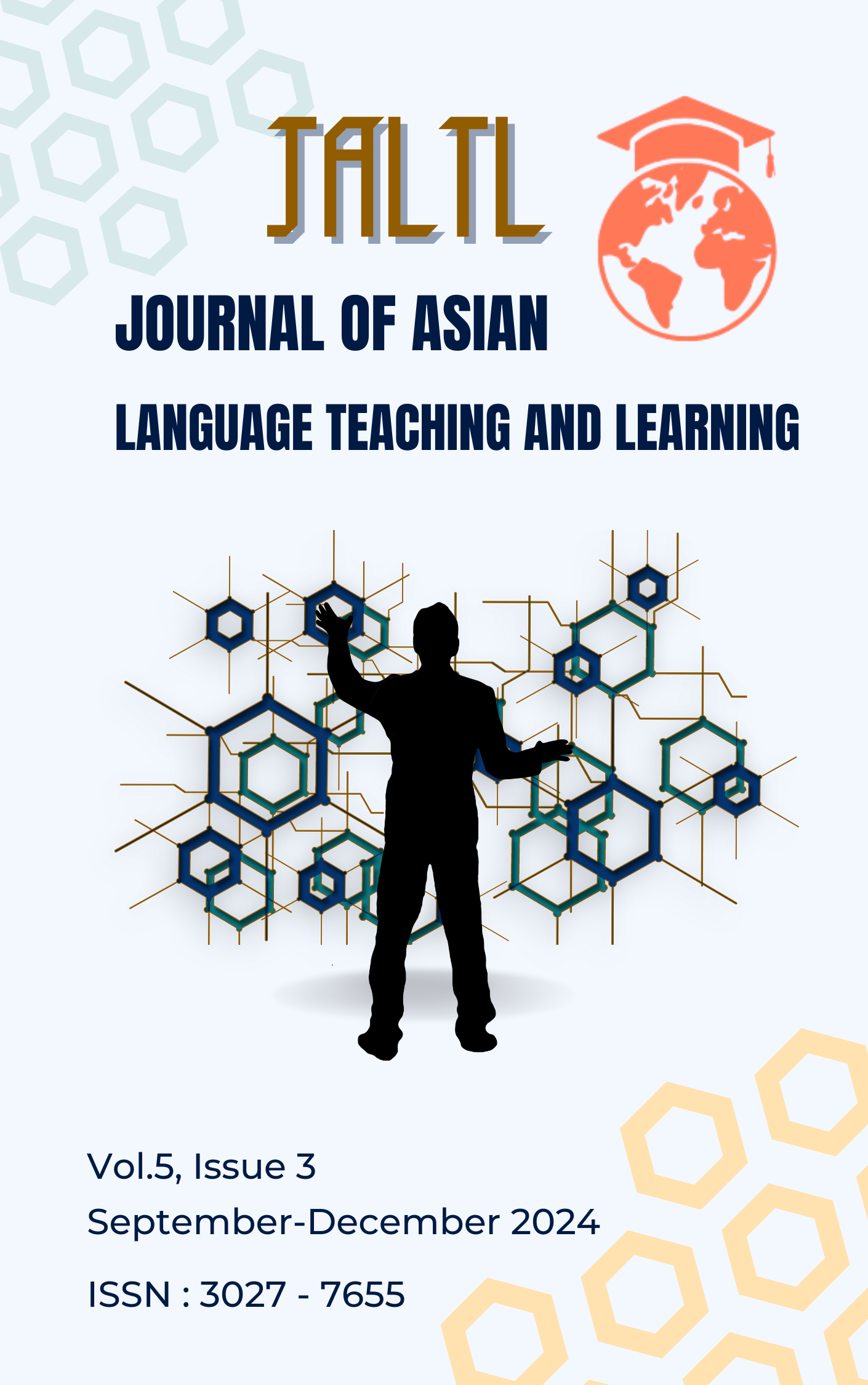Development of English Listening and Speaking Skills for Grade 10 Students by Using Task-Based Learning at Myintkyina in Myanmar
Main Article Content
Abstract
The aim of this study were 1) To study the opinion of Grade 10 students on the connection between English listening and speaking skills, 2) To analyze the connection between English listening and speaking skills for Grade 10 students in Myitkyina, Myanmar, 3) To develop the guideline for connecting English listening and speaking skills for Grade 10 students in Myitkyina, Myanmar, and 4) To propose the guideline for connecting English listening and speaking skills for Grade10 students in Myitkyina, Myanmar. The participants were 50 Grade10 students in Myitkyina, Myanmar. The study uses a Research and Development (R&D) method and includes four main parts: research, guideline development, implementation, and evaluation. The instrument was questionnaires related to connection between English listening and speaking skills, the developing model and satisfaction from students, the guideline for connecting English listening and speaking, the pre-test and post-test of the connection between English listening and speaking, and a questionnaire of the student’s satisfaction of the guideline for connecting English listening and speaking. These instruments were designed for grade 10 students in Myitkyina, Myanmar. The calculation method was the percentage, mean, standard deviation by Microsoft Office Excel program. The research findings encompass various aspects of English language learning among adolescent learners. Among the 50 participants, females are slightly more represented at 60.00%, while males make up 40.00%. The majority of respondents, 66.00%, belong to the age group of 15-20 years, indicating a focus on late adolescence. Regarding practice frequency, 48.00% engage in English listening and speaking practice five days a week, demonstrating a high dedication to regular practice. Career aspirations are diverse, with 58.00% aiming for higher education, 30.00% targeting professions requiring English skills, and 12.00% aspiring for international travel or living abroad.
In terms of language study duration, 78.00% of students have studied English for over 6 years, suggesting varied exposure levels. While respondents generally exhibit high confidence in speaking English, challenges and comfort levels vary. Beliefs regarding the connection between listening and speaking skills show generally high agreement levels, with some variability in perceptions. Teachers employ diverse interactive strategies to address challenges in teaching English listening and speaking, such as motivation and proficiency disparities. Following intervention, the percentage of the student’s pre-test score 65.2% for listening 68.7% for speaking, and 67.0% for connecting listening and speaking, the students post test score was better by 72.4% for listening 75.1% for speaking, and 73.7% for connecting listening and speaking, and the students’ satisfaction of the guideline for connecting English listening and speaking was also in satisfied level by the mean for 4.46, and standard deviation for 0.91.
Article Details

This work is licensed under a Creative Commons Attribution-NonCommercial-NoDerivatives 4.0 International License.
References
Bottiani, J. H., Duran, C. A. K., Pas, E. T., & Bradshaw, C. P. (2019). Teacher stress and burnout in urban middle schools: Associations with job demands, resources, and effective classroom practices. Journal of School Psychology, 77, 36-51.
Brown, D. (2006). Principles of language learning and teaching. USA: Y Pearson Education, Inc All, p. 57.
Crystal, D. (2003). English as a Global Language. Cambridge University Press, p. 84.
Ellis, R. (1985). Twelve questions about teaching English. TESOL Quarterly, 19(4), 613-628.
Graddol, D. (2024). The Future of English? The British Council. Source: http://www. britishcouncil.org/learning-elt-future.pdf
Hardman, F., Stoff, C., Aung, W., & Elliott, L. (2014). Developing Pedagogical Practices in Myanmar Primary Schools: Possibilities and Constraints. Asia Pacific Journal of Education, 36(1), 45-65.
Harmer, Jeremy. (1991). The Practice of English Language Teaching: New Edition Longman Handbooks for Language Teachers. UK: Pearson P T R, p. 16-17.
Kumaravadivelu, B. (2003). Second language teacher education: A critical foundation. Oxford: Oxford University Press, p. 52.
María Rodríguez Rodríguez. (2024). The importance of teaching listening and speaking skills. Source: https://shorturl.asia/KkrWF
Rittel, H. W., & Webber, M. M. (1973). Dilemmas in a General Theory of Planning. Design: Critical and Primary Sources. Policy Sciences, 4(2), 155-169.
Smith, J. (2022). Challenges in English Language Learning: A Case Study of Grade 10 Students in Myitkyina. Journal of Language Education, 45(2), 123-138.
Soe, Hnin Yu. (2018). Challenges for the Development of Education in Rural Areas of Myanmar, Bulgarian. Journal of Science and Education Policy (BJSEP), 12(2),
-302.
Tyrosvoutis, Gregory. (2016). Taking the Sage off the Stage: Identifying Obstacles to Student-Centered Instruction on the Thai-Myanmar Border. International Education Journal: Comparative Perspectives, 15(4), 112-132.
Vandergrift, L., & Goh, C. (2012). Teaching and Learning Second Language Listening. New York: Routledge, p. 54.
Wang, L., & Calvano, L. (2022). Class size, student behaviors and educational outcomes. Organization Management Journal, 19(4), 126-142.
Yune Andryani Pinem. (2014). The correlation between listening and speaking among high school students. Journal of English Language Teaching and English Linguistics, 1(1), 12-23.


